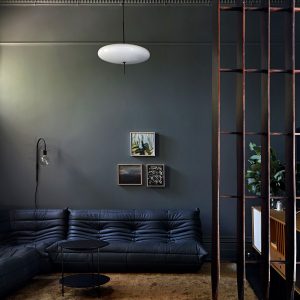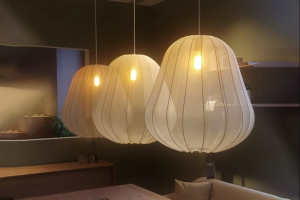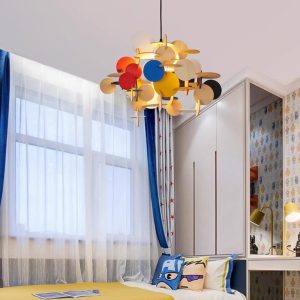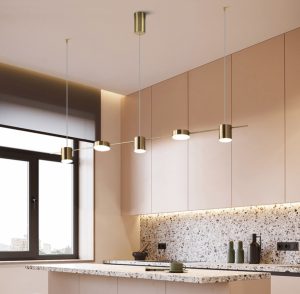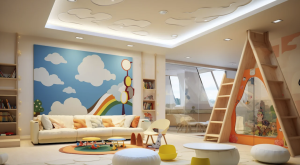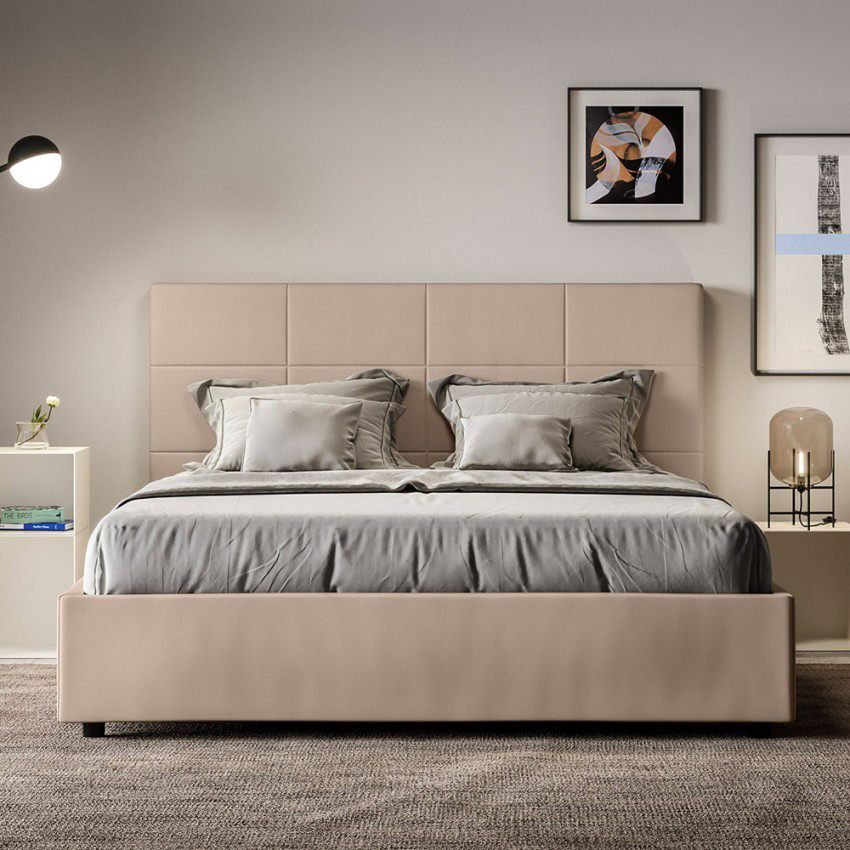
Bedroom lighting plays a crucial role in creating a comfortable and relaxing environment. The right lighting can enhance the mood, improve sleep quality, and add a touch of style to your bedroom decor. In this blog post, we will explore the different types of bedroom lamps and their functions, discuss the impact of color temperature on your lamp24 bedroom lighting, provide tips for choosing the right lampshade, and offer advice on how to maintain and clean your bedroom lamps for longevity and efficiency.
Understanding the Importance of Bedroom Lighting
The impact of lighting on mood and sleep cannot be overstated. Bright, harsh lighting can make it difficult to relax and unwind, while dim, warm lighting can create a cozy and soothing atmosphere. The right lighting can also help regulate your sleep-wake cycle by signaling to your body when it’s time to wind down and prepare for sleep.
In addition to its impact on mood and sleep, lighting also plays a crucial role in creating a comfortable bedroom environment. It can highlight certain areas of the room, such as reading nooks or dressing areas, and provide task lighting for activities like reading or getting ready in the morning. By choosing the right type of lighting for each area of your bedroom, you can create a functional and aesthetically pleasing space.
Types of Bedroom Lamps and Their Functions
There are several types of bedroom lamps that serve different functions. Table lamps are versatile and can be placed on bedside tables or dressers to provide ambient or task lighting. Floor lamps are ideal for larger bedrooms or areas where you need additional lighting. Wall sconces can be mounted on the wall to save space and provide focused lighting. Pendant lights are a stylish option that can be hung from the ceiling to create a statement piece in your bedroom.
Task lighting is essential for activities like reading or working in bed. It typically comes in the form of adjustable desk lamps or swing-arm wall lamps that can be positioned to provide direct light where you need it. Ambient lighting, on the other hand, is softer and more diffused, creating a warm and inviting atmosphere. This can be achieved through the use of table lamps, floor lamps, or wall sconces with dimmable bulbs.
Choosing the Right Lampshade for Your Bedroom
When choosing a lampshade for your bedroom lamps, there are several factors to consider. The size and shape of the lampshade should complement the base of the lamp and the overall style of your bedroom. A larger lampshade will provide more diffused lighting, while a smaller one will create a more focused beam of light.
Different types of lampshades can also affect the quality and direction of light. A fabric lampshade will soften and diffuse the light, while a metal or glass shade will create a more direct and focused beam. Consider the desired effect and ambiance you want to create in your bedroom when choosing a lampshade.
The Impact of Color Temperature on Your Bedroom Lighting
Color temperature refers to the warmth or coolness of light. It is measured in Kelvin (K) and can range from warm white (2700K-3000K) to cool white (5000K-6500K). The color temperature of your bedroom lighting can have a significant impact on the overall ambiance and mood.
Warm white light creates a cozy and relaxing atmosphere, making it ideal for bedrooms. It mimics the warm glow of candlelight and promotes relaxation. Cool white light, on the other hand, is more energizing and stimulating, making it suitable for areas where you need to be alert and focused, such as task lighting for reading or working.
Energy Efficiency: How to Choose the Right Bulbs for Your Lamps

Choosing energy-efficient light bulbs is not only good for the environment but also for your wallet. There are several types of light bulbs to choose from, including incandescent, halogen, compact fluorescent lamps (CFLs), and light-emitting diodes (LEDs).
Incandescent bulbs are the least energy-efficient option and are being phased out in many countries. Halogen bulbs are slightly more efficient but still consume a significant amount of energy. CFLs are more energy-efficient than incandescent and halogen bulbs, but they contain mercury and require special disposal. LEDs are the most energy-efficient option, using up to 80% less energy than incandescent bulbs and lasting significantly longer.
When choosing a bulb for your lamp, consider the wattage, color temperature, and lifespan. LED bulbs are available in a range of color temperatures and can be dimmable, making them a versatile choice for bedroom lighting.
Layering Your Bedroom Lighting: Tips and Tricks
Layering your bedroom lighting involves using different types of lighting to create depth and dimension in your space. It can enhance the overall ambiance and provide flexibility for different activities.
Start by considering the different areas of your bedroom that require lighting, such as the bedside tables, dressing area, or reading nook. Use a combination of ambient lighting, task lighting, and accent lighting to create a layered effect. For example, you can use a table lamp on each bedside table for ambient lighting, a pendant light or chandelier for general lighting, and a wall sconce or adjustable desk lamp for task lighting.
Styling Your Lamps to Complement Your Bedroom Decor
Choosing lamps that match your bedroom decor is essential for creating a cohesive and stylish space. Consider the overall style of your bedroom, whether it’s modern, traditional, bohemian, or minimalist, and choose lamps that reflect that style.
Pay attention to the materials, colors, and shapes of the lamps. For example, if you have a modern bedroom with clean lines and neutral colors, choose lamps with sleek metal or glass bases and simple, understated lampshades. If you have a bohemian bedroom with vibrant colors and natural textures, opt for lamps with woven or ceramic bases and colorful, patterned lampshades.
How to Determine the Ideal Lamp Height for Your Bedroom
The height of your bedroom lamps is crucial for both functionality and aesthetics. The general rule of thumb is that the bottom of the lampshade should be at eye level when you are sitting or lying in bed. This ensures that the light is directed where you need it and prevents glare.
Consider the height of your bedside tables or other surfaces where you plan to place your lamps. The lamp should be tall enough to provide adequate lighting but not so tall that it overwhelms the space. If you have a tall headboard or high ceilings, you may need taller lamps to balance the proportions.
Common Mistakes to Avoid When Choosing Bedroom Lamps
When choosing bedroom lamps, there are several common mistakes to avoid. One mistake is not considering the size and scale of the lamps in relation to the furniture and overall room size. Oversized lamps can overpower a small bedroom, while undersized lamps can get lost in a larger space.
Another mistake is not considering the function of the lamp. If you plan to use the lamp for reading or other tasks, make sure it provides adequate task lighting. Additionally, avoid using mismatched lamps that don’t complement each other or the overall style of your bedroom.
Maintaining and Cleaning Your Bedroom Lamps for Longevity and Efficiency
To ensure that your bedroom lamps last for a long time and operate efficiently, it’s important to maintain and clean them regularly. Dust the lamp bases and lampshades with a soft cloth or duster to remove any dirt or debris. For fabric lampshades, use a lint roller or vacuum attachment to remove dust and pet hair.
Avoid using harsh chemicals or abrasive cleaners on your lamps, as they can damage the finishes or materials. Instead, use a mild soap and water solution or a specialized lamp cleaner. Be sure to unplug the lamp before cleaning and allow it to dry completely before plugging it back in.
In conclusion, bedroom lighting is an essential element in creating a comfortable and relaxing space. By understanding the importance of lighting, choosing the right lamps and lampshades, considering color temperature and energy efficiency, layering your lighting, styling your lamps to complement your decor, determining the ideal lamp height, avoiding common mistakes, and maintaining and cleaning your lamps, you can create a bedroom that is both functional and aesthetically pleasing. Take the time to carefully consider your lighting choices and enjoy the benefits of a well-lit and inviting bedroom.
